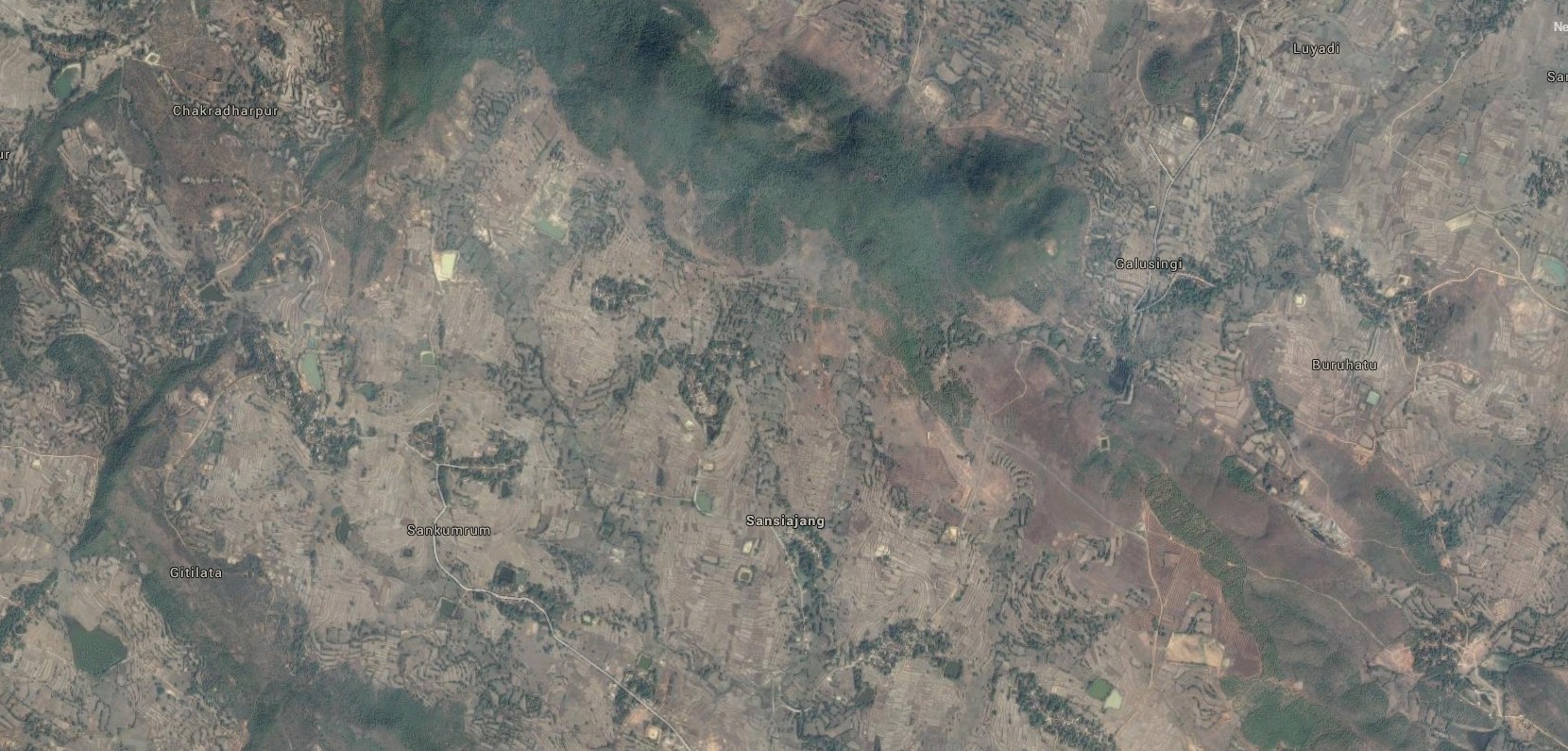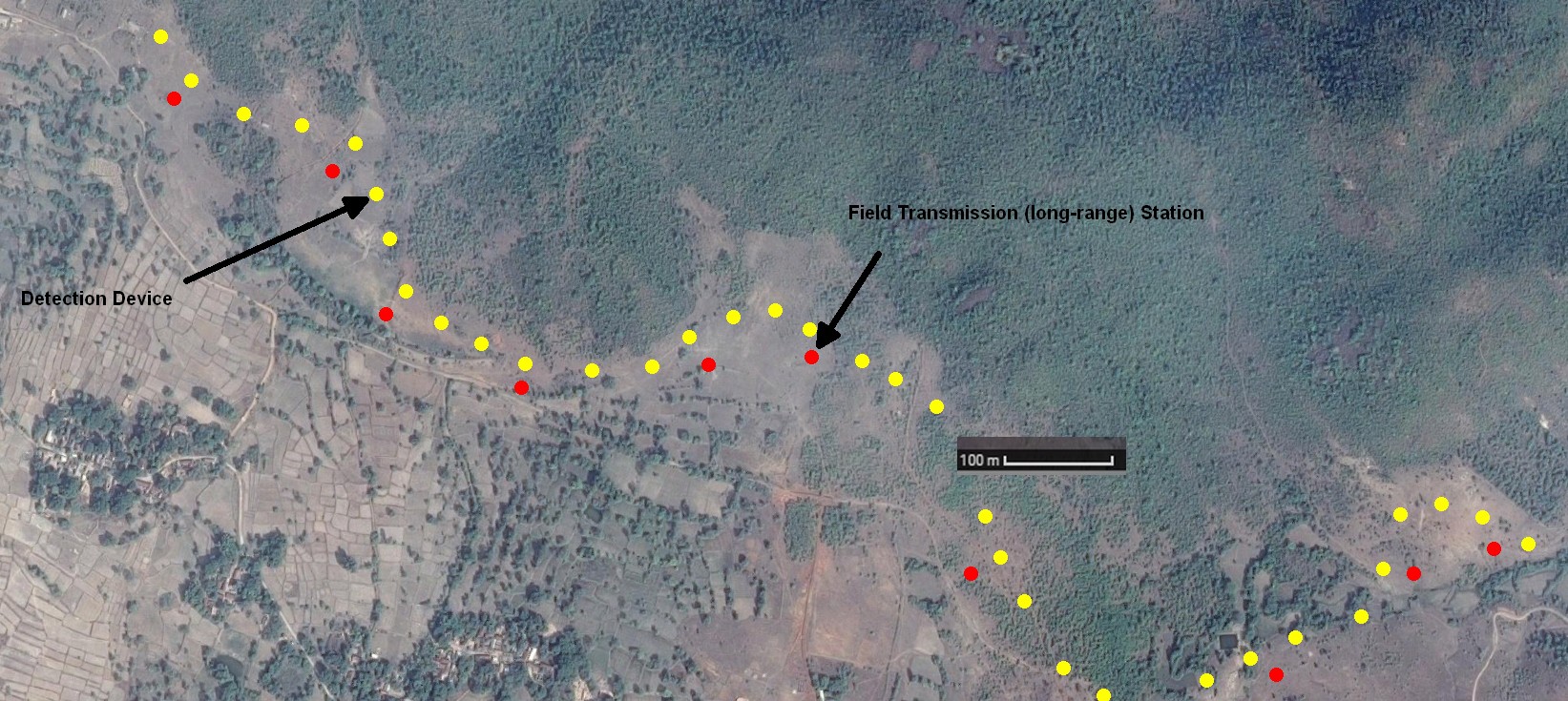How can we solve the challenge of detecting elephants in order to provide local people with advance warning of their presence? Advance warning being particularly useful in that it can: a.) prevent people stumbling upon elephants unaware and spooking them b.) allow interception of crop-raiding elephants before they reach the crops (this is thought to be safest and easiest time to deter them). Early detection of elephants will mitigate human-elephant conflict, thus preventing death and injuries of both elephants and humans.
This short video from http://www.wcs.org shows elephants launching their crop-raiding mission during the night,and the local people trying to scare them away.
In this solution, small weatherproof cases containing required elephant-detection system (elephant detection device) hardware will be tree- or pole-mounted in locations previously identified as being known to be passed by elephants. These locations could be a) interfaces between forests and farmland b) elephant pathways (these are the established trails that elephants use to move between, for example, forest and watering areas c) frequent railway-line crossings.
The elephant-detection system (elephant detection device) hardware will comprise [see them here]:
- Raspberry Pi 3
- camera module
- communication via RF [or can make use of 3G if we are lucky enough to have coverage/ or GPRS as outlined in this log] short-range (120m) using XBee 2mW RF transmitters for sending to the field transmission stations
- storage for image database (SD card)
- solar panels and associated components
- PIR sensor
It's imperative that the elephant-detection device is of very low-cost (<£100), as multiple devices will be required, and the budget of villagers affected might not be very high. The purpose of an elephant-detection system being open-source, is so that villagers can access plans, download software, purchase components, and assemble the system themselves; placing detection devices where they expect elephants!

How do we detect an elephant from the images that the camera obtains?
The most challenging part of the project is comparison of taken images of suspected elephants with known images of elephants! This would be quite easy if using MatLab, but this is not open-source and it's very expensive! Instead, I'm using OpenCV in Python to either compare histograms (the fastest and least intensive re processing & resources) or to feature match (slower and more resource intensive). This processing will be accomplished using the Raspberry Pi's on each elephant detection device, and the detection results will be transmitted via RF to the field transmission stations, and then onwards to the village base station.
I've outlined the different methods I'm testing in the following project logs:
- See this project log for outline of using FlannBasedMatcher and FLANN ( Fast Approximate Nearest Neighbor Search Library ) for feature matching,
- See this project log for outline of using histogram comparison with Python and OpenCV
- See this project log for more advanced methods
This is an example overview of software and hardware activity on the elephant detection device, and the outcomes that positive and negative results of elephant detection would trigger. In this example, the histogram comparison method was employed:

Example placement of elephant-detection system components
As an example, I have used Sansiajang, Odisha, India. This village was identified in 'Human-Elephant Conflict: Case Study from Balasore and Rairangpur division of Mayurbhanj Elephant Reserve, Odisha, India' as being afflicted by human-elephant conflict.

Note that elephants tend to use night as cover for their crop-raiding missions, which has implications for the type of camera used (i.e. we will likely switch to using IR camera at a later stage in the project. A thermal camera would be really great but also prohibitively expensive!).
The detection devices will have XBee 2mW RF transmitters/receivers with range of 120m. Thus, for approx. each 3 of these detection devices, there will be long-range field-transmission station with extended range modem to send data regarding elephant-detection (yes/no) back to the village base station.
An alternative communications configuration which makes use of GPRS modems fitted to each elephant detection device, thus eliminating the requirement for field transmission stations is outlined in this project log.

The field-transmission station hardware will comprise:
- Raspberry Pi 3 with SD card storage
- XBee 2mW RF transmitter/receiver for receiving from elephant detection devices
- Long-range RF Modem
- Solar panels and associated components
The village base-station hardware will comprise:
- Raspberry Pi 3 with SD card storage
- Long-range RF Modem
- DSL Modem or 4G internet access
- LED signboard (LEDs on a map of local area activated corresponding to elephant detection device that spotted elephants)
- Solar panels and associated components
Future directions for the automated elephant-detection system
In addition to detecting elephants and reporting their locations to villagers, the elephant detection devices, or the village base station, could communicate to elephant repelling towers. These would be devices containing Raspberry Pi, RF communications hardware, solar panels with associated components, and stereo amplifiers with speakers. In the event that a elephant repelling tower was activated, it would produce audio designed to trick elephants into thinking that tigers or bees were present in the area they were passing.
Several studies have provided evidence that elephants are frightened by recorded sounds of bees and tigers! See for example, papers by King et al. 'Bee Threat Elicits Alarm Call in African Elephants' and Thuppil et al 'Playback of felid growls mitigates crop-raiding by elephants Elephas maximus in southern India'
However, it should be noted that elephants may well be too smart to feel frightened for long, as they will become habituated to roars without a bite/buzzes without a sting!
Open Source
Any software written for the Automated Elephant-Detection System project is free software; you can redistribute it and/or modify it under the terms of the GNU General Public License version 3 See http://www.gnu.org/licenses/
This is the license for OpenCV, since OpenCV libraries will be used in the project http://opencv.org/license.html
This is the license for Python, since Python will be used in the project https://www.python.org/download/releases/3.4.0/license/
Any hardware plans for the Automated Elephant-Detection System project, including 3d design files and stl files, etc. are licensed under a Creative Commons Attribution-ShareAlike 4.0 International License. See http://creativecommons.org/licenses/by-sa/4.0/
 Neil K. Sheridan
Neil K. Sheridan